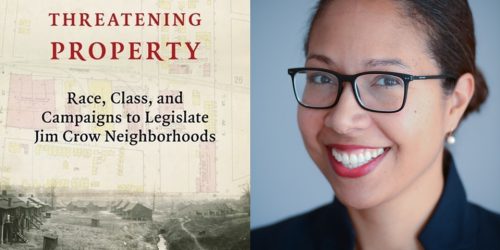University Press Roundup: Halloween Edition
Welcome to our Friday roundup of this week’s spookiest university press blog posts. As usual, feel free to stop by the comments if there’s anything you find particularly ghoulish!
We begin by embracing John Hopkins University Press’s call for a “Return of the Scary.” As part of an ongoing blog series that discusses current trends in poetry and literature, author Jerry Griswold observes that in recent years, children’s literature and media have perhaps been de-fanged. Recalling recent explorations of horror aimed at young audiences, such as Shrek or Monsters, Inc., it may be difficult to contextualize the success of Tim Burton’s twisted imaginings, or even the Gothic styling of Lemony Snicket. But rest assured, Griswold argues–despite our fond memories of sweeter childhood fairy tales–what we’re seeing is instead a return to the morbidity that has always characterized children’s stories. Just remember what happened to poor Ichabod Crane.
Speaking of horror in literature, Cambridge University Press author Andrew McCann touches on the popular idea of consciousness (or the partial surrender of consciousness) as relating to authorship and the occult. That is, for some the creative process remains a mystery even to the creators themselves, where origins of artistic expression seem to defy rational explanation and are instead credited to external–sometimes paranormal–means of inception and transmittance.
And who, if anyone, might embody the archetypal writer driven by some force beyond rationality, if not Poe? Kevin J. Hayes, editor of The Cambridge Companion to Edgar Allen Poe and Edgar Allen Poe in Context, discusses the literary grotesqueries of Poe’s legacy and his associations in American culture with Halloween. But Poe’s no one-trick pony, asserts Hayes–the godfather of Goth also invented the detective story, experimented with science fiction, and could counterbalance the truly shocking with humor. “So, read some Poe this Halloween for a good scare. Read Poe the rest of the year for fascinating insights into his world—and ours.”
Apparently the University Press of Mississippi has Film Friday (!), and this one, of course, happens to fall on Halloween. So “what’s even scarier than watching a horror movie?”, they ask. Reading about them! As the press has recently begun growing its Film Studies list to include horror, we encourage readers and film buffs alike to take a look at some of their featured books here.
And lastly, we’d like to briefly join our university press friends in presenting some Halloween-appropriate academic texts. Fordham University Press today features Scare Tactics: Supernatural Fiction by American Women, which looks at the rise of “disturbing and uncanny tales” from American women authors between the Civil War and the 1930s.
McGill-Queen’s University Press features today Children into Swans: Fairy Tales and the Pagan Imagination, which examines the underlying religious, pagan, mythological, and cultural beliefs and anxieties that present themselves as common motifs in fairy tales. Sweeping across a broad scope of Western literature–from pre-Christian European folk literature to the nineteenth century–author Jan Beveridge offers a compelling insight into “some of the most extraordinary worlds ever portrayed in literature.”
That’s it for this week’s university press roundup. Happy Halloween, everyone, and thanks for stopping by!




